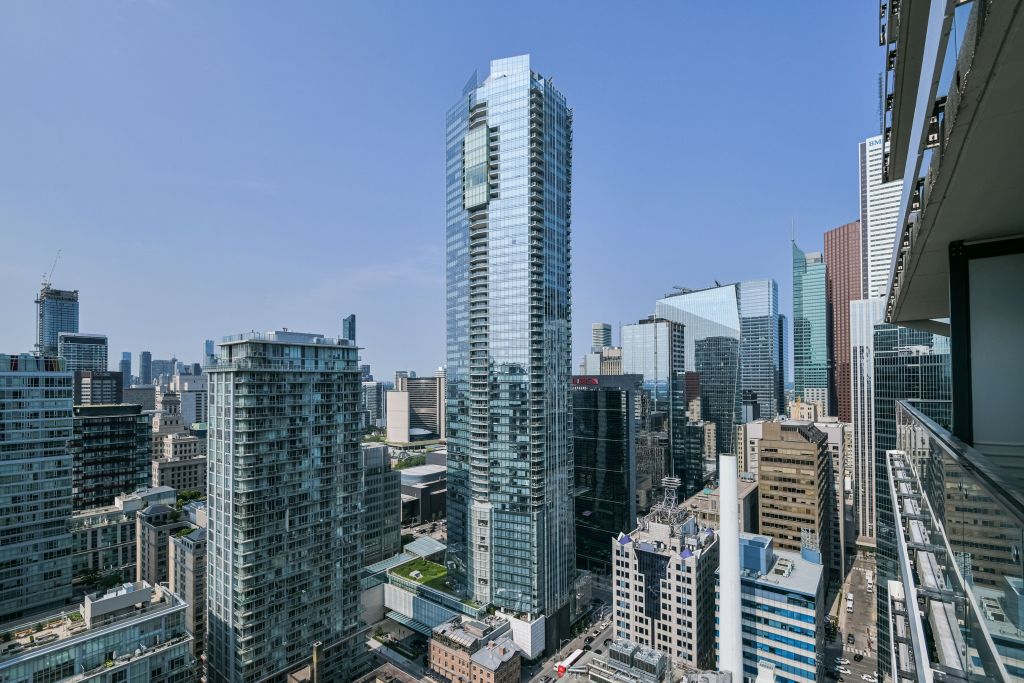
After a quieter summer and a cautious start to the fall market, October delivered the clearest sign yet that Toronto’s real estate landscape is stabilizing. Sales activity continued to improve, inventory eased from September’s surge, and prices held firm month-over-month. While the market is not roaring forward, October showed a meaningful shift in sentiment as buyers re-engaged and competition tightened slightly across several segments.
Below is a full breakdown of how the market performed and what it means for buyers and sellers heading into the final stretch of the year.
October at a Glance
- Sales: Up 9.76% month-over-month
- New Listings: Down 16.57% month-over-month
- Active Listings: Down 5.40% month-over-month
- Average GTA Price: Down 0.47% month-over-month
- Average Days on Market: 50 days (down from 51 in September)

GTA Market Overview
October delivered a second consecutive month of sales growth, rising nearly 10% from September. Buyers who had previously stepped to the sidelines over the summer began returning, encouraged by improved affordability expectations, increased negotiation power, and a sense that prices may have reached a temporary floor after months of softening.
Inventory also pulled back in October. New listings dropped more than 16% month-over-month, and active listings declined just over 5%. While supply remains higher than last year, the month-over-month easing helped bring the market closer to balance. With fewer new listings coming online, sellers benefited from slightly less competition than they faced in September.
Prices remained stable, dipping less than half a percent. Considering the broader downward pressure over the past year, October’s minimal price movement suggests values may be flattening as the market finds an equilibrium between what sellers are willing to accept and what buyers are prepared to pay.
Key Takeaway: October showed improving buyer engagement and tightening inventory – two key ingredients for price stabilization.
Key Market Drivers in October
Improved Buyer Confidence
The fall market saw stronger engagement as buyers adjusted to borrowing costs and gained clarity around pricing. This confidence translated into increased sales activity across both freehold and condo segments.
Inventory Eased After a September Surge
September’s spike in listings created temporary pressure on prices. With fewer new listings in October, buyers had less choice, helping restore some balance.
Price Stability Encouraged Move-Ups and First-Timers
Stable pricing helped both move-up buyers and first-time purchasers make more confident decisions, especially in the condo and semi-detached segments.
GTA Market Performance: Month-Over-Month
- Sales increased by 9.76% (+546 sales)
- New listings declined by 16.57% (-3,191 listings)
- Active listings dropped by 5.40% (-1,586 listings)
- Average price decreased slightly by 0.47% (-$5,005)
- Days on Market improved from 51 to 50 days
Key Takeaway: The combination of rising sales and falling listings is a positive directional shift for market balance.
GTA Market Performance: Year-Over-Year
- Sales down 7.81% from October 2024
- New listings up 4.83% from last year
- Active listings up 13.59% from last year
- Average price down 7.12% year-over-year (-$80,843)
- Days on Market up 16.28% from last year (+7 days)
Key Takeaway: While the month-to-month narrative has improved, year-over-year comparisons continue to show a softer market with more choice and lower prices than last fall.
416 Market Breakdown by Property Type
Sales Activity (Month-Over-Month)
- Detached: Up 10.67% (+72 sales)
- Semi-Detached: Up 22.90% (+49 sales)
- Townhouse: Up 13.64% (+30 sales)
- Condo: Up 14.04% (+132 sales)
Sales growth was seen across all housing types, marking one of the broadest improvements this year. Semi-detached homes led the month, followed closely by the condo sector, which regained momentum after a slower summer.
Key Takeaway: Buyer interest strengthened across all segments, showing renewed confidence in the market.
Pricing Trends (Month-Over-Month)
- Detached: Down 3.97% (-$66,966)
- Semi-Detached: Up 3.18% (+$37,582)
- Townhouse: Down 4.19% (-$38,919)
- Condo: Up 2.66% (+$18,126)
Freehold properties saw mixed performance. Detached and townhouse values experienced modest declines, while semis posted the strongest price gains of the month. Condos also saw average prices rise, supported by an uptick in demand and more motivated fall buyers.
Key Takeaway: Semi-detached homes stood out as the strongest performer, while condos continue to offer value-driven opportunities for buyers.

What This Means for Buyers
With inventory easing and sales strengthening, buyers considering a purchase in the next three to six months may want to take advantage of current conditions. Prices have shown signs of stabilizing, and as competition picks up, the negotiation leverage seen through the summer could begin to narrow.
Key Takeaway: Buyers still hold advantages, but conditions are shifting. Acting before inventory tightens further could be beneficial.
What This Means for Sellers
October offered sellers a more encouraging landscape than earlier in the fall. With fewer new listings entering the market, properly priced homes saw more consistent showings and engagement. Attractive, well-prepared properties continue to see the strongest results.
Key Takeaway: Sellers who position their home strategically and price with the current market will find more motivated buyers than in recent months.
Our Take
October marked an important turning point for Toronto real estate. While we’re not seeing dramatic price growth or frenzied bidding wars, the combination of stronger sales and softer listing numbers suggests the market is working toward balance. Confidence has improved, and both freehold and condo buyers are moving more decisively than they did over the summer.
Heading into the final months of the year, the market appears more stable and predictable than it has been for most of 2025. For both buyers and sellers, clarity is returning, and informed strategies are key. As always, reach out any time if you’d like to learn more!






















